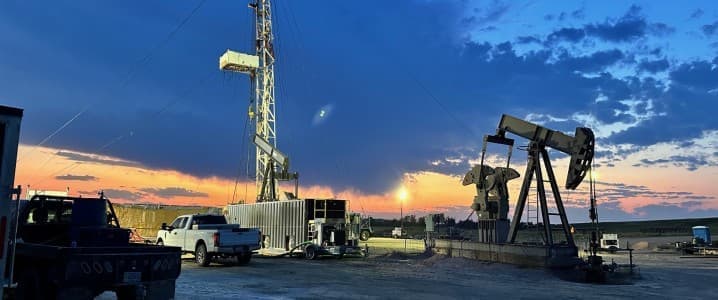The resurgence of oil production by OPEC+ members is significantly impacting the United States shale industry, which is grappling with what some executives are calling a “price war.” The International Energy Agency (IEA) has predicted an impending oil glut, further complicating an already challenging environment for shale producers. As prices remain unstable, industry leaders are adjusting their strategies, with some halting new production efforts until prices stabilize in the range of $75 per barrel.
Kirk Edwards, chief executive of Latigo Petroleum, shared insights with the Financial Times, stating, “We are not going to be putting any more rigs out until prices get back and stabilise in the $75 range ahead. You will see U.S. production start to drop in the fall and into 2026.” This cautious approach contrasts sharply with plans from major players like Exxon and Chevron, both of which continue to pursue production growth in the shale patch despite the current challenges.
The shifting landscape is also evident within companies themselves. This month, Diamondback Energy experienced a significant change in sentiment. The newly appointed chief executive emphasized that the shale industry is “pushing the limits of efficiency.” This statement diverges from remarks made by the previous CEO, who warned in April that shale oil growth had peaked under the prevailing price conditions.
Despite the optimism from some, a prevailing consensus indicates that the immediate future will not see substantial gains in shale production. A crucial factor contributing to this outlook is OPEC+, which has been increasing its output. Former chief executive of Pioneer Natural Resources, Scott Sheffield, noted, “The best way for OPEC to gain market share is to keep oil prices in the $60s range for several years. This will reduce investment in U.S. shale, Canada, Brazil and oil exploration around the world.” While this strategy may benefit OPEC, internal reports suggest that the organization is struggling to maintain prices at this low level for an extended period.
Last week, reports highlighted that Saudi Arabia is feeling the effects of weakened oil prices, having to slow spending on diversification initiatives. The chief economist of the Abu Dhabi Commercial Bank remarked that a sustained decline in oil prices would necessitate a significant reduction in government spending to manage growing debt levels.
Demand projections from the IEA have not painted a favorable picture for either OPEC+ or U.S. shale producers. The agency observed that crude oil demand growth was considerably lower than expected for early 2025, while supply levels were higher than anticipated. The IEA indicated that OPEC+ plans to reverse a production cut of 2.2 million barrels per day by the end of September, contributing to a potential inventory surplus that could exceed previous highs recorded during the pandemic.
The IEA’s forecast for demand growth stands at just 680,000 barrels per day for this year, inching slightly up to 700,000 barrels per day by 2026. Such figures suggest an emerging glut in global inventories, reminiscent of the oversupply witnessed during the pandemic lockdowns.
While the IEA has occasionally missed its predictions, the current environment necessitates a significant slowdown in oil demand growth for the anticipated glut to materialize. It is imperative that both OPEC+ and U.S. shale producers continue to adjust their output strategies.
Despite ongoing discussions about efficiency gains within the shale sector, it appears that the industry may be nearing its limits. There exists a price threshold below which production growth becomes economically unfeasible until a more favorable balance between supply and demand is achieved. The IEA’s latest Short-Term Energy Outlook indicated that “low oil prices in early 2026 will lead to a reduction in supply by both OPEC+ and some non-OPEC producers, which we expect will help moderate inventory builds later in 2026.”
Interestingly, the IEA’s monthly oil market reports typically cite the growth of electric vehicle sales as a key factor in driving down oil demand; however, this month, the agency attributed lower demand growth in significant markets such as India, Brazil, and China to a sluggish overall economy. Some analysts suggest that the tariffs imposed by former President Donald Trump may be influencing this economic downturn.
As the repercussions of these tariffs begin to affect U.S. shale production more noticeably, the dynamics of the market may shift once again. The interplay between OPEC+ actions and U.S. shale responses will be crucial in determining the oil landscape in the coming years.





























































